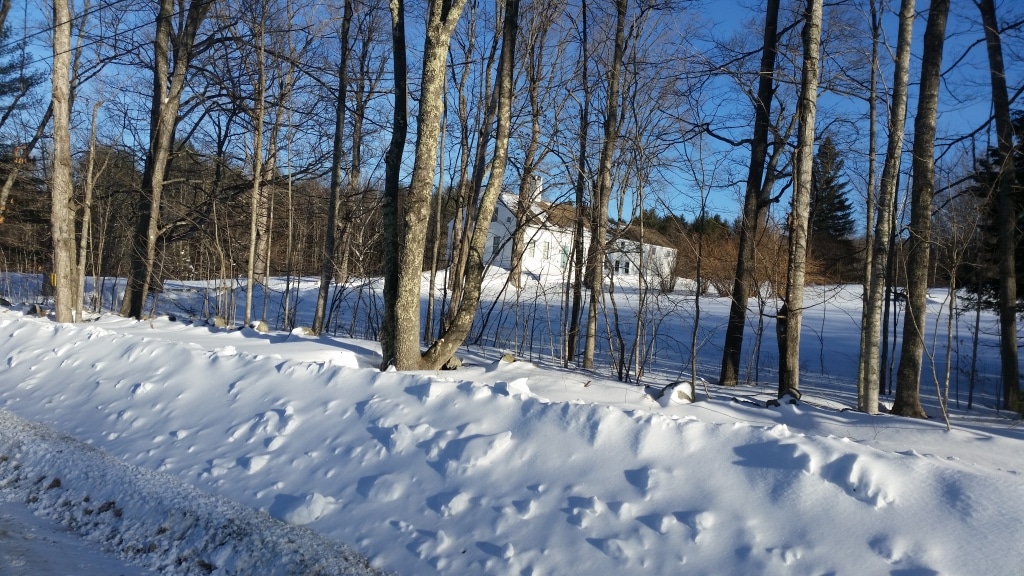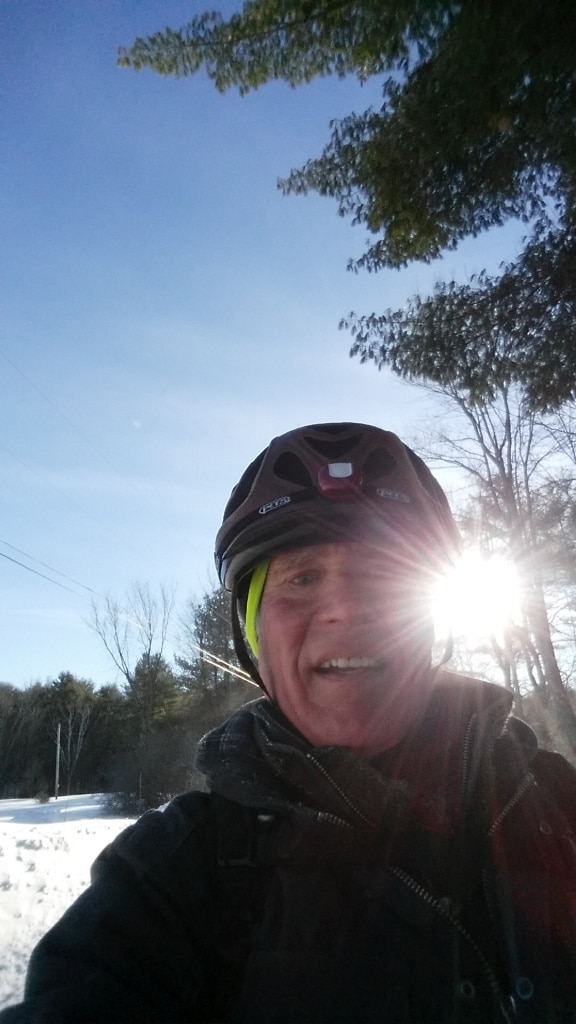
So what do we generally have as commuting options; car. bus, subway, bike or feet, right? How about commuting to work on a horse. That is what I do. I live in a rural town in Maine called New Gloucester. I have a farm situated on three hundred acres of mostly woodlands. I raise pigs, keep geese, chickens and I own three horses. My son has an orchard on our farm and makes hard cider which he sells commercially locally. We have gardens as well where we raise a variety of herbs and vegetables. All of our roads surrounding our farm are dirt. Two days a week, I work at a non-profit that I helped found called Healing Through Horses (HTH). HTH is an equine assisted psychotherapy practice that partners mental health practitioners with horses to help people with the challenges they face in their lives. We have four therapists and eight horses serving sixty clients at my partner’s farm a mile from my farm. My mare, Cyra, is a member of our practice with a list of her own clients who love her and rely on her healing presence in their lives so I ride her to work.
Cyra is a cross between a Clydesdale and a Newfoundland pony. Anheuser Busch has made the Clydesdale breed famous because of their use of them in pulling their famous beer wagons. Cyra has the look and build of a Budweiser horse in a smaller package. She has a broad and at this time of year, a very furry back. For this reason I ride her with no saddle. My only “tack” or equipment for her is a rope bridle that I made for her out of yachting rope. She is a very sensible horse that knows her job and does it without fuss. She can be stubborn and pull attitude (at work we call this “Cyratude”) but on our rides to and from work, she is rock solid. On Thursdays, we go home after dark and she is not at all phased by cars and their headlights, even when they are oncoming and blindingly bright on our otherwise dark ride home. Recently, we went to work with the temperature at five degrees below zero. The following is an account of that ride.
The recent blizzard had dumped over two feet of snow so the farm was buried under a layer of white that muted the contours of the land. I had cleared paths with the snowblower to get to the barn, the garage and the woodshed. I had spent all of the previous day doing snow removal, not only at our farm but at HTH. There I used our 55 hp four wheel drive John Deere diesel tractor to clear the paddocks of snow. I had not listened to the weather so was quite taken aback when I came down in the morning to see the temperature was -10. By the time I had all the animals fed and watered (I had to snowshoe into the pigs with their water and food), it had warmed up to a balmy -5.

There was no wind which was a blessing. Even the slightest breeze can make -5 seem much colder. I could feel the heat of her body coming up through my clothing and I silently thanked my living seat warmer for that gift on this cold day. Cyra was feeling perky and picked up a trot soon after leaving the barn driveway. I was not at all convinced this was a good idea and brought her back down to a walk. During our summer commutes together, we leave the roads as soon as we can and take to the fields and woods to get to work, trotting and cantering when the footing is good but on this morning we stuck to the cleared roads and kept our pace to a sedate walk.
I could here birdsong as we rode along. Our resident chickadees, were optimistically singing their two note song, usually reserved for the spring. Not much else could be heard except for the crunch, squeak of Cyra’s hooves. The winter months are a time of stillness and quiet in the country, especially after a big storm when animals are hunkered down and not moving much. I settled into the rhythm of Cyra’s movement under me. I was transfixed for a while by the sight of her lush mane as it flowed from side to side with each step she took. There was nary a cloud in the sky which was an unbroken azure dome above our heads. Even at a walk, our forward progress on the dirt road caused my face to burn with the cold winter air. Stone walls lined the road on either side of me, their long ago stacked rocks now white instead of granite gray. There was an 1820 farmhouse on my right. Moses True had built it and had farmed this land almost two hundred years ago. His old farmstead stood at the top of a hill and as we crested it, I looked back to see the just risen sun doing its best to warm up this January day.
I heard a car slowly approaching behind us and was pleased to see that as it drew along side it was my wife in her commuter vehicle making her way to her work. I pulled Cyra up into a halt and we chatted for a bit before she got out of her car and took some pictures of us. When she pulled away, we were left to ourselves once more, descending the hill now on the second half of ride. At the bottom, the woods fell away to be replaced by hay fields recently sculpted by the wind during the storm. The shadows of the trees at the edge of the fields were crisp and black on the new layer of white. Our shadow too kept us company as the road was now bathed in the sun of this new day. The cold air had a clarity to it that made everything seem sharper and more clearly defined. A slight breeze blew over the fields and my face felt this stirring of the air.


